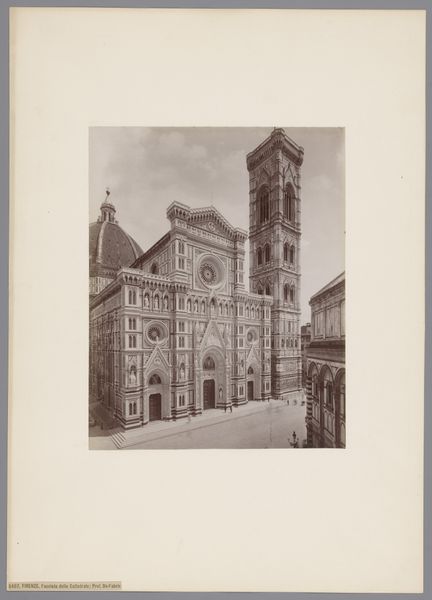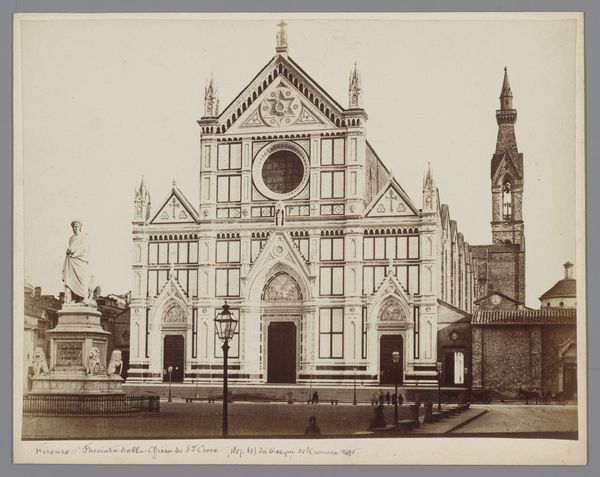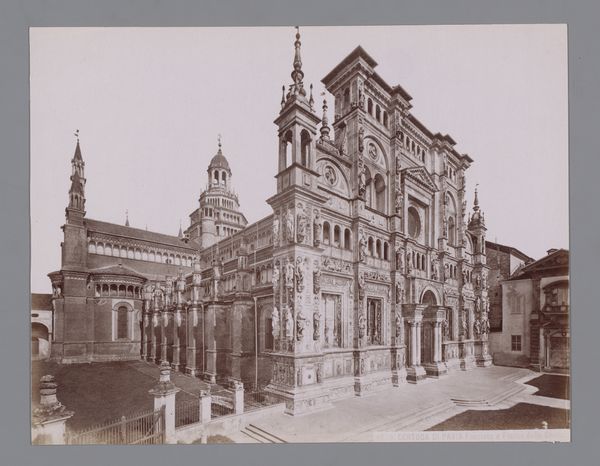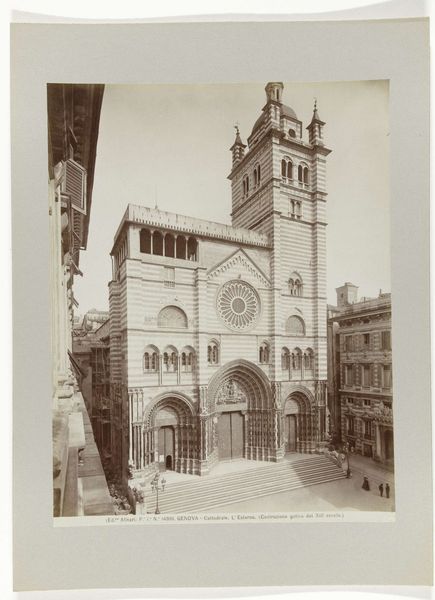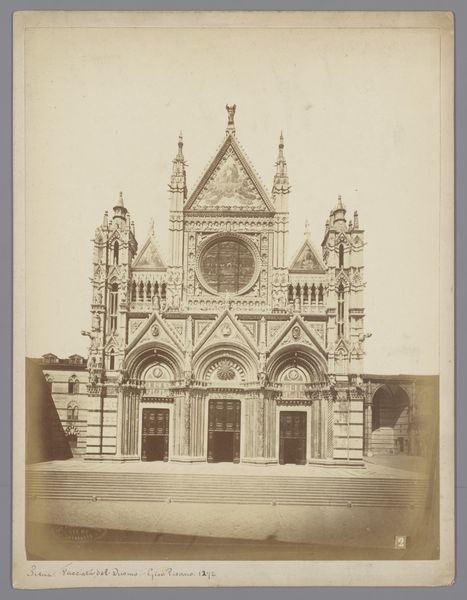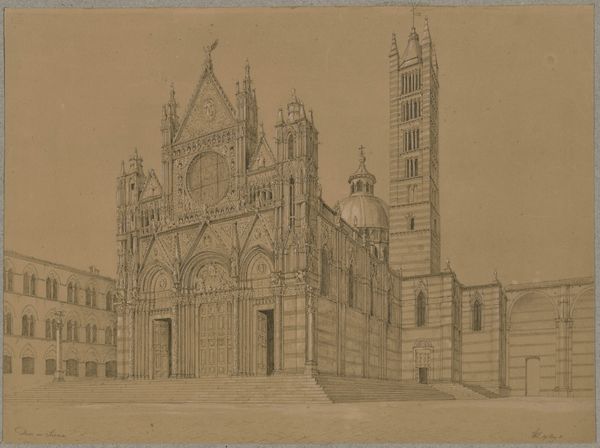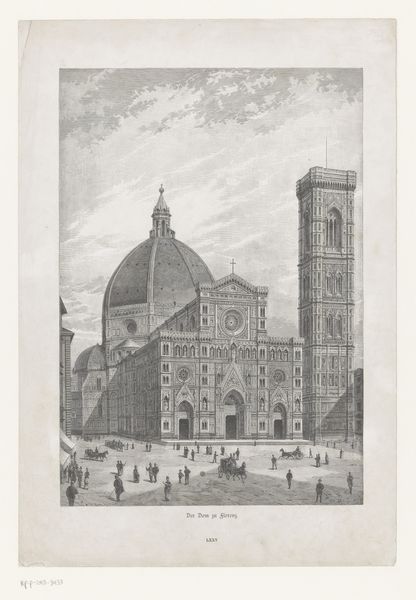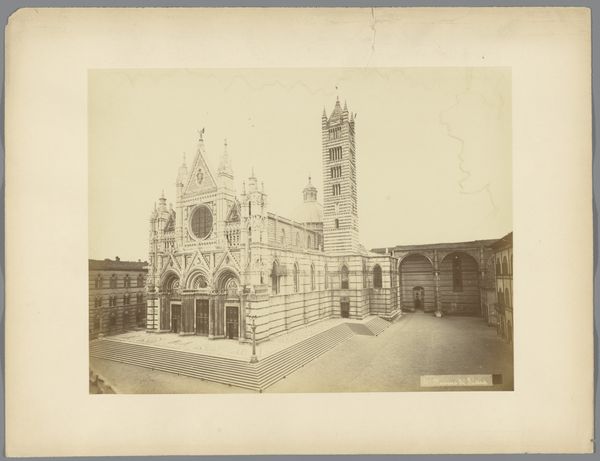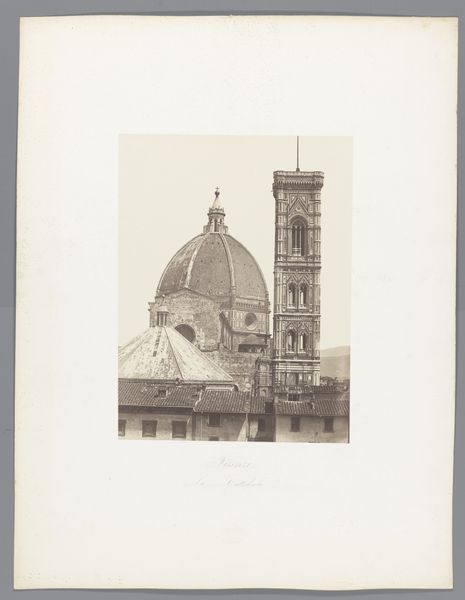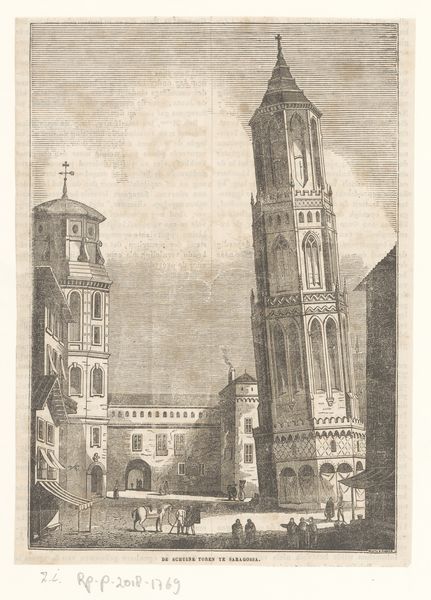
print, photography, gelatin-silver-print, architecture
# print
#
photography
#
gelatin-silver-print
#
cityscape
#
italian-renaissance
#
architecture
Dimensions: height 248 mm, width 192 mm, height 328 mm, width 241 mm
Copyright: Rijks Museum: Open Domain
Editor: Here we have an albumen silver print from around 1887-1895, attributed to Fratelli Alinari, showing the façade of the Florence Cathedral and its campanile. It's a beautiful, formal shot. What jumps out at me is the geometric intricacy – how every surface seems to be covered in patterns. What do you see in this piece? Curator: Beyond the geometries, which are undeniably striking, I am drawn to the visual language employed here, a conscious echoing of forms and symbols meant to invoke the power of the church. Notice how the rose window over the main portal is echoed in the smaller circles around the façade, suggesting a radiating, all-encompassing divine presence. The repeated arches themselves suggest a sense of heavenly order. What feeling do these symbolic repetitions evoke in you? Editor: That makes sense. I guess it feels… very deliberate. Like everything is there for a reason, pointing towards something bigger. Is that feeling intended to be… overwhelming? Curator: Precisely! The Duomo was designed in part to project civic and religious pride. Look at how the verticality of the campanile draws your eye upwards, a visual metaphor for spiritual aspiration. The architects are speaking in a symbolic language of power, tradition and faith. Editor: So, the visual choices communicate something specific. I see that now. Curator: Indeed. Each statue, each carefully placed stone, functions as a kind of visual scripture, reinforcing the narrative and authority of the Church. Editor: This has given me so much to think about regarding how buildings themselves can function as texts. Curator: And I am reminded of how deeply ingrained such symbolic architectures remain within our visual culture.
Comments
No comments
Be the first to comment and join the conversation on the ultimate creative platform.
